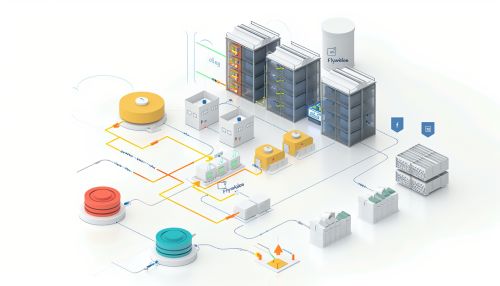Flyweight Pattern
Overview
The Flyweight Pattern is a software design pattern that is used to minimize memory usage and computational expenses by sharing as much data as possible with other similar objects. It is a structural pattern that applies to the structure of a complex object or a group of objects. The term "Flyweight" is derived from boxing, where it refers to a weight class that is characterized by small size and fast speed.
Concept
The Flyweight Pattern is based on the concept of reducing the number of objects that are created, initialized, and stored in memory. It achieves this by sharing objects that are identical in terms of their intrinsic state. The intrinsic state is the data that is independent of the object's context, and therefore can be shared. The extrinsic state, on the other hand, is the data that depends on and varies with the object's context and cannot be shared.
Implementation
The Flyweight Pattern is implemented by creating a Flyweight Factory that manages the creation and sharing of Flyweight objects. The factory maintains a pool of existing Flyweight objects and, whenever a client requests a Flyweight, the factory checks the pool to see if an object matching the requested intrinsic state already exists. If it does, the existing object is returned. If not, a new Flyweight object is created, added to the pool, and then returned.


Use Cases
The Flyweight Pattern is particularly useful in situations where a large number of objects need to be created and these objects share a lot of data. By sharing data, the Flyweight Pattern can significantly reduce memory usage, making it a valuable tool in performance optimization.
Examples of the Flyweight Pattern in use include:
- Text editors, where each character in the document is a Flyweight object with the character's glyph as the intrinsic state and the character's position and style as the extrinsic state. - Computer graphics, where complex 3D models can be represented as a collection of shared Flyweight objects, reducing the memory footprint of the model. - Game programming, where the Flyweight Pattern can be used to manage large numbers of similar objects, such as bullets in a shooting game or trees in a forest scene.
Advantages and Disadvantages
The main advantage of the Flyweight Pattern is its ability to reduce memory usage by sharing data among similar objects. This can lead to significant performance improvements in situations where a large number of objects need to be created.
However, the Flyweight Pattern also has some disadvantages. The main one is that it increases complexity by introducing additional classes and interfaces. Furthermore, the shared state of Flyweight objects can lead to issues if not handled carefully, as changes to the shared state will affect all objects that share that state.
Related Patterns
The Flyweight Pattern is often used in conjunction with other design patterns. For example, it can be combined with the Composite Pattern to represent a hierarchical structure of Flyweight objects. It can also be used with the Factory Pattern to manage the creation and sharing of Flyweight objects.
